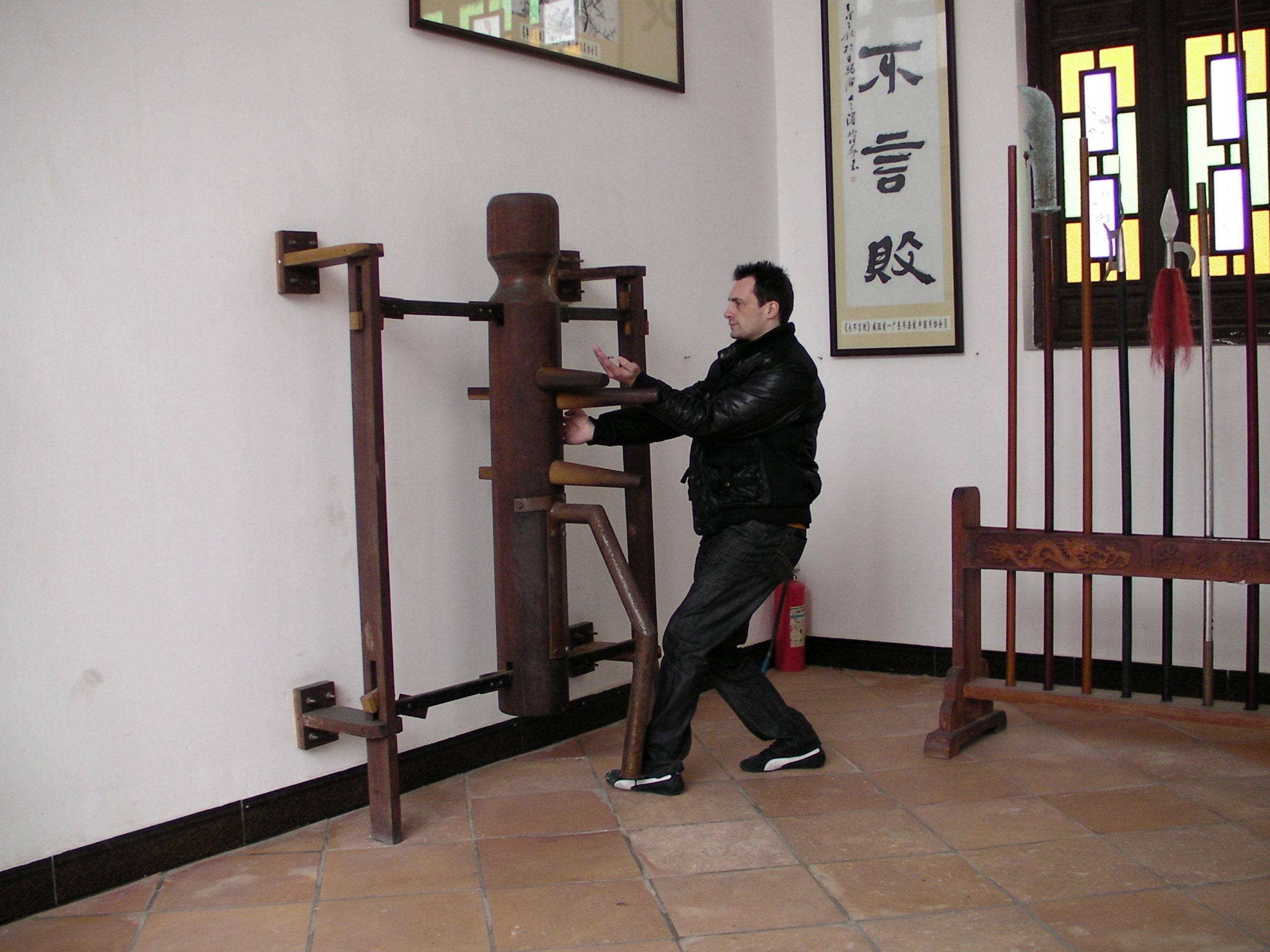The hidden face of Wing Chun
Based on what is displayed on Youtube, Facebook and other social networks, it is clear that Wing Chun is considered as a first order self defense martial art, but this very westernized point of view is only the tip of the iceberg.
Having learned Wing Chun with Chinese masters, I must admit that quite often my learning process of this art was not focused on improving my martial skills, but rather on my cultural believes that for these Chinese masters were obstacles to my evolution and understanding of the Wing Chun system.
Today, I would like to share with you the cultural founding principle of Wing Chun, that was explained to me by my masters, outside of the workout center and of body practice, in those times where the student invites the master to the restaurant and where, to show you its gratitude, he gives you a philosophical lesson on the deep nature of Wing Chun.
This basis is that Wing Chun is a 100% taoist martial art, meaning it is determined by Tao rules. You then have to know some things about this philosophy and the associated spirituality to understand the deep foundation of Wing Chun.
First, it is important to know what the idea of the two mutual and complementary forces Yin and Yang means. It defines everything, day and night, man and woman.
Taken back to Wing Chun, one could say strength&softness, speed&slowness, rigidity&flexibility.
If you keep in mind this theory and come back to the westernized point of view of Wing Chun, you can say that the western world considers Wing Chun with the very visible, very concrete Yang side, whereas unfortunately, the deep, subtile Yin side is underestimated.
What happens next to this Yin/Yang theory is creation of the third (trigram), often defined by Man, in between the Yang Sky and Yin Ground.
This is explained by the fact that if you learn one side and then the other, there is something new that comes into being.
If you understand this taoist tryptic principle, then you now understand why Wing Chun is built upon 3 bare hands forms.
Siu Lim Tau. You may have noticed it is often written Tao and not Tau. But actually this Chinese character meaning germinate or grow, should be used instead of Tao that means classify, shape, even if the latter supplanted the former due to its use in many Kung Fu styles where forms are designated taos.
Siu Lim is the foundation where you build yourself for yourself, this is the Yin side.
Cham Kiu is the form where you build yourself for the others, this is the Yang side.
Biu Jee is the form where you build every possibility of the Yin/Yang theory, some kind of addition.
For a taoist, those three forms must be learned three times with different work axes to be understood: one practical version, one physiological version, and one strategical version.
For each of these 9 versions, there will be 9 steps to reach perfection (9*9=81 representing perfection in the way of Tao). You then realize that Wing Chun is a life’s journey.
Of course, after the three comes the four, that takes us back to Yin/Yang, with the Yang dot into the Yin and the Yin dot into the Yang, symbolism that every action comes with a part of its opposite.
In our practice, the wooden dummy is in fourth position of the learning process.
This form teaches us to reconcile and consolidate everything and brings new options in our practice.
If you consider Tao, wooden dummy is then not only a piece of wood serving as a punching ball, but a true partner, that allows applying all aspects of the Yin/Yang theory:
– Yin in Yang
– Yang in Yin
– Yin in Yin
– Yang in Yang
Following this idea, you can envisage at least four different manners of practicing the same movement, explaining also why each Wing Chun school differs from another, each teacher being on its own way. A Yang in Yang teacher will be very practical, fight oriented, whereas a Yin in Yin teacher will be prone to a more internal Wing Chun, based on flexibility.
The next idea is the five movements, better known in western countries as the five elements (Wood/Fire/Earth/Metal/Water). This is the 10000 being theory of taoism.
This is following this point of view that all other forms with and without arms are learned and offer the plain vision of the style’s capabilities.
All of this should give you ideas and orientations to build your practice. Thanks to these principles, you can find your nature, Yang or Yin, and then imagine exercices to reinforce it or try to modify your body balance being Yang on one move and Yin on another.
This work will improve your adaptability and you will observe related spontaneous actions emerging in your Chi Sao.
This will allow you discovering a third way, then a fourth and help build your ways into the practice.
Of course, there are many other Tao principles that are useful to fully understand the style, such as the eight trigrams, allowing the player who became an instructor to design its future lessons, or the practice of breathing and energy that opens a window on Chinese medicine.
Wing Chun is a life’s journey, a continuous learning process, enjoy your training…






